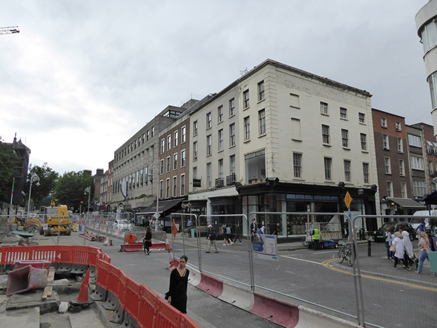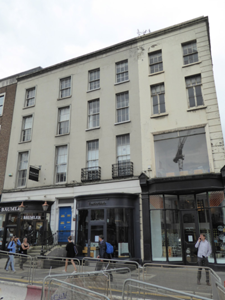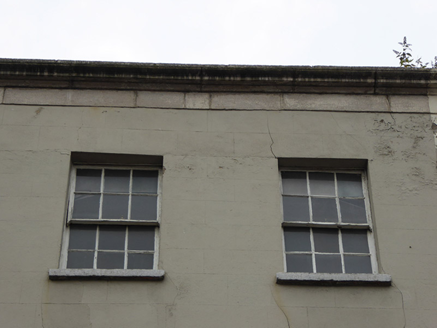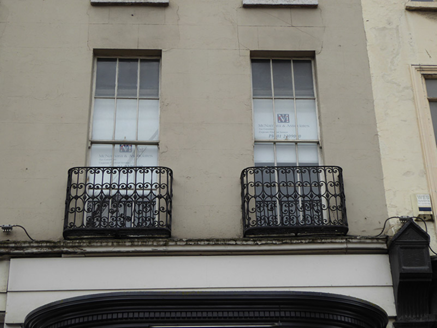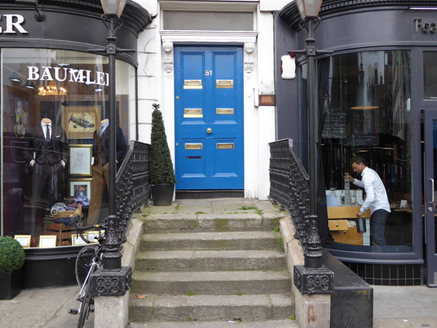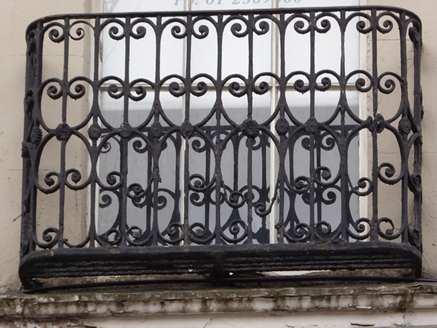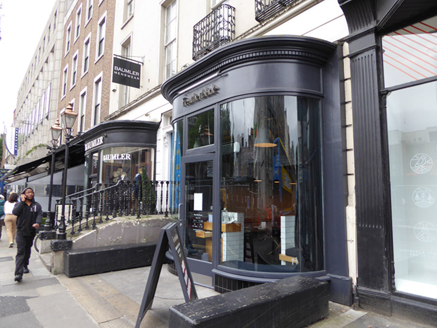Survey Data
Reg No
50100048
Rating
Regional
Categories of Special Interest
Architectural, Artistic
Original Use
House
In Use As
Shop/retail outlet
Date
1710 - 1840
Coordinates
316053, 233773
Date Recorded
07/09/2016
Date Updated
--/--/--
Description
Attached two-bay four-storey former house, built c. 1720 as middle-of-terrace of three (Nos. 51A-51C), remodelled c. 1830, and having projecting replacement timber quadrant shopfront to ground floor; partly abutted to rear. Now in use as commercial premises. Pitched slate roof, running perpendicular to street behind high parapet wall, with clay ridge tiles. Painted ruled-and-lined smooth render to upper floors, with granite frieze, cornice and blocking course to parapet, channelled smooth render to ground floor beneath continuous moulded first floor sill course. Square-headed window openings to upper floors with painted masonry sills to second and third floors, decorative cast-iron balconies to first floor, and timber six-over-six pane sliding sash windows diminishing in height towards top. Doorway to south appears to serve both Nos. 51A and 51B Dawson Street, with timber four-panel door set in doorcase having slender moulded pilasters carrying decorative consoles with moulded cornice transom, and with plain overlight. Approached by granite steps and landing with flanking plinth walls carrying decorative cast-iron balustrades terminating at pavement in decorative cast-iron lamp standards on square cast-iron decorative bases on stone plinth.
Appraisal
One of a group of three early nineteenth-century buildings on this stretch of Dawson Street that display unified proportions and detailing. It represents the previous iteration of Dawson Street as an essentially mixed residential and shopping street, before it became progressively commercialized, and prior to the extensive replacement of earlier buildings with larger and more idiosyncratic late nineteenth and twentieth-century buildings. The quadrant shopfront, albeit replacement, repeats on a number of occasions in Dawson Street. The decorative wrought-iron balconettes contribute artistic interest to the facade. The street was laid out in the early eighteenth century and this building represents a later phase of development, contributing to the varied and distinctive urban grain of the area.
